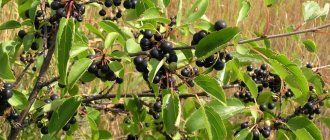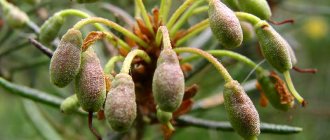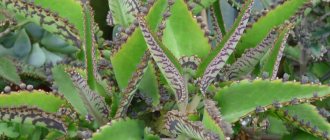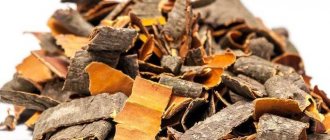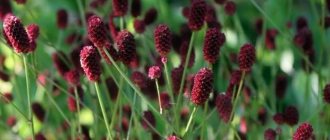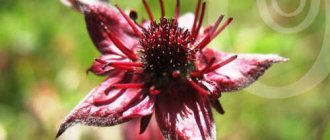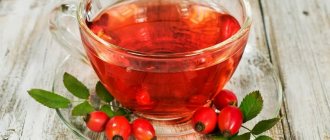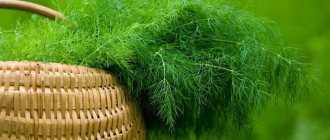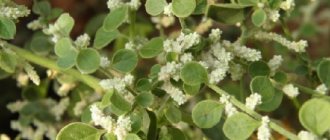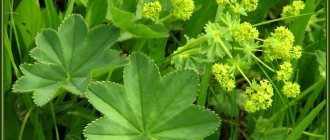general information
Oak is a genus of the beech family with about 600 species, the typical representative of which is the common oak.
Common oak, or pedunculate oak, is a deciduous tree 45-50 m high, belonging to the Beech family. An adult plant has a circumference of about 2 m. Its trunk at an early age is covered with smooth grayish-white bark; as the tree matures, the bark acquires a dark color and becomes rougher. The oak has a voluminous crown with a large number of branches. The leaves of the plant have a lobed shape and are distinguished by a jagged design. The root system is highly developed, extends to a depth of 20 meters and is spherical in shape. The fruits of the tree are acorns. They ripen in mid-autumn. The young fruit is green, the mature one is brown or brown. The plant takes root in warm places, as it does not tolerate frost well. It is used for decorative purposes. In a suitable climate, oak can be found near ponds, the edges of fields, near gardens and parks. The tree grows in mixed forests.
Oak bark is used as a medicinal raw material. Solid raw materials are tubular or oblong pieces of bark, the thickness of which varies from 3-4 to 6 mm. Its surface is shiny or matte, with a smooth or wrinkled structure. The outside bark is colored light gray or light brown; the inside color varies from yellowish to brown. The raw material has a peculiar odor, which tends to intensify when wet. The taste of aqueous extracts of oak bark is astringent.
Crushed oak bark is light brown or gray in color that can pass through a 7 mm sieve. The powder from it can be freely sifted through a sieve with 0.5 mm holes. Crushed oak bark and its powder have a peculiar faint odor. Raw materials are packaged in cardboard boxes, which help preserve their valuable medicinal properties.
Common oak (Quercus robus L.// Quercus pedunculata Ehrh.)
Quercus is the Latin name for oak (from the Greek kerkeen - rough, rough); Latin robur - oak wood; Latin pedunculatus - petiolate (from pedunculus - petiole).
Description
A large, beautiful, powerful deciduous tree of the beech family, reaching 40-50 m in height and 2 m in diameter, sometimes reaching an age of 1000 years or more. Oak evaporates more than 100 tons of water during the warm season, which is 225 times its own weight. There are about 20 species of oak in our country. The most common of them is pedunculate oak. The root is powerful, branched, the crown is spreading. The bark of young shoots is smooth, olive-brown, while of old shoots it is gray-brown, with cracks. The leaves are alternate, simple, oblong-obovate, pinnately lobed, glabrous, shiny with prominent veins. In spring, the oak blooms late, one of the last among our trees. The oak tree blooms in April-May, when it still has very small leaves. The flowers are unisexual, monoecious, very small and inconspicuous. Male or staminate flowers are collected in peculiar inflorescences - long and thin yellowish-greenish hanging earrings, reminiscent of hazel earrings. These earrings hang down in whole bunches from the branches and are almost identical in color to young small leaves. The female or pistillate flowers of oak are sessile, very tiny - no larger than the head of a pin. Each of them looks like a barely noticeable greenish grain with a crimson-red tip. These flowers are located singly or in groups of 2-3 at the ends of special thin stems. Acorns grow from the female flowers in the fall. After flowering, a small cup-shaped wrapper-plus grows first, and then the fruit itself - an acorn. Acorns do not tolerate drying out; as soon as they lose even a small part of the water, they die. They rot easily in warm conditions and are very sensitive to cold and frost. This circumstance presents a certain difficulty in preserving acorns for seeds. In nature, there is no such problem: acorns that fall in the forest in late autumn overwinter in a damp litter of leaves under a thick layer of snow, which protects them from both drying out and frost. The germination of an acorn resembles the germination of a pea: its cotyledons do not rise above the soil surface, like many plants, but remain in the ground. A thin green stalk rises up. At first it is leafless, and only after some time small leaves appear on its top.
Growing
Oak reproduces not only by seeds, but also, like many deciduous trees, it produces shoots from the stump. After an oak is cut down (only, of course, not a very old one), many young shoots appear on the bark of the stump. After cutting down an old oak forest, the oak tree usually does not regenerate on its own. The shoots from the stumps do not appear, and young oak trees that have grown under the canopy of mature trees are drowned out in the open by various grasses and bushes and die. In place of a cut down oak forest, young birch or aspen usually soon appear - this is how the tree species change. In order to prevent this and grow a young oak forest, it is necessary to periodically cut down less valuable, fast-growing tree species.
Oak grows only in well-drained soils, devoid of constant excess water, but it tolerates a lack of moisture in the soil well. An old oak tree that has grown in the open from a young age is never tall. The crown of such a tree is very wide and starts almost from the ground itself. An oak tree grown in a forest, on the contrary, is tall, slender, and its crown is narrow, laterally compressed and begins at a fairly high altitude. In ancient times, almost half of the forests in Europe were oak forests, but now oak forests account for about 3% of all forests in Europe. By cutting down oak trees, we are ruining our future and our health. One 50-year-old oak cleans the air to the same extent as a thousand young trees.
Blank
For medicinal purposes, the bark of young branches and trunks of trees under 20 years of age is used, and less commonly, acorns. The collection time should coincide with the period of sap flow, from April to June. On young bark, smooth, intact, without cracks or growths, make circular cuts at a distance of 30 cm from each other, then cut lengthwise and remove the bark in the form of grooves. The bark is laid out in a thin loose layer on a bedding, plywood and dried in a well-ventilated area, under a canopy, in attics, turning over daily. They are dried in dryers, ovens, ovens at a temperature not exceeding 40-50°C.
During drying, it is necessary to ensure that the bark does not become dusty, dirty, or wet (when wet, it loses tannins and becomes unsuitable for use). Dried raw materials are tubular pieces of bark 20-30 cm long, shiny on the outside, sometimes matte, light brown or gray, smooth or slightly wrinkled, without cracks, odorless, with a strongly astringent taste. On the inside they are yellowish or reddish-brown, with longitudinal ribs. The bark should not contain any impurities of wood or cork. It is advisable to harvest bark only from trees harvested in the order of planned felling.
Chemical composition
Acorns contain up to 40% starch; 5-8% tannins; sugar, fat, oil - up to 5%. The leaves contain tannins and coloring agents, quercitrin and quercetin, as well as pentosans. Oak bark contains 10-20% tannins; organic acids (gallic, ellagic, etc.), catechins, carbohydrates, mucus, starch, large amounts of pentosans (up to 13-14%); pectin substances (up to 6%); in addition, quercetin, sugars and phlobafen. Oak bark contains protein substances. Starch, tannins, protein, sugar, fatty oil were found in acorns; tannins and quercetin were found in leaves. The older the tree, the less tannins there are in its bark.
Pharmacological properties
Oak preparations have an astringent, anti-inflammatory and anti-putrefactive effect. Tannin (the main active part of the tannins of the bark) upon contact with the wound combines with proteins, forming a protective film that protects the tissue from local irritation, resulting in reduced inflammation and pain. Tannin interacts with the proteins of microorganisms, stopping their growth or leading to their death.
Application in medicine
Oak bark is used externally as an astringent and anti-inflammatory agent for diseases of the oral cavity (gingivitis, stomatitis, amphodentosis). It is used as a gargle for inflammation of the pharynx, tonsils, bleeding gums and bad breath. It is also recommended for glossitis and pharyngitis. An infusion of oak bark has a strengthening effect, like resin, on internal vessels. External use of oak bark is useful for skin diseases, for washing purulent and non-healing wounds and ulcers, for sweating feet, weeping eczema, bleeding hemorrhoids, vaginal inflammation (leucorrhoea). Good results have been reported in the treatment of burns. Oak bark is included in bath mixtures for scrofula and rickets. In large doses it is prescribed for catarrh of the stomach and intestines, diarrhea and dysentery. On oak leaves you can often see reddish-yellow or green balls that look like small apples - these are galls. They appear after an insect bite. Galls in powder are used for gastrointestinal disorders, purulent wounds, burns, skin diseases (skin tuberculosis, lichen and eczema). Powder from dried galls or fresh galls is used to lubricate eczema, lichen, and burns.
Medications
Decoction of oak bark: the bark is crushed to a particle size of no more than 3 mm, then take 20 g of crushed bark, pour 200 ml of water at room temperature, close, heat in a boiling water bath with frequent stirring for 30 minutes, cool for 10 minutes, filter, squeeze out, add water to the original volume. Take 100 ml 2-3 times a day for colitis with diarrhea, gastrointestinal bleeding, gastritis, rinse the mouth and throat for tonsillitis, stomatitis. Young, fresh and dry bark, infused for 30 minutes in boiling water, gives a fixing infusion. If you soak a handkerchief in this infusion and tie it around your throat, it will help against incipient goiter and obesity in the neck. This bandage is no less effective for diseases of the glands. If you have rectal prolapse, you should take sitz baths from this infusion.
Decoction of oak bark: boil 40 g of bark in 250 ml of water for 30 minutes, then leave for 2 hours. Make lotions for burns and eczema; enemas, baths - for bleeding hemorrhoids; wash wounds, ulcers, do foot baths for sweaty feet. A decoction of oak bark is used internally for poisoning with mushrooms, copper and lead salts, as well as for diseases of the liver, spleen, chronic inflammation of the urinary tract and bladder, bleeding in the gastrointestinal tract, and heavy menstruation. Infusion of oak bark: infuse 10 g of oak bark in 400 ml of chilled boiled water for 6 hours, then strain. Drink 100 ml 3-4 times a day before meals for diseases of the stomach, intestines, kidneys, and lungs.
Oak bark ointment: Mix two parts of oak bark powder, one part of black poplar buds with seven parts of butter, keep in a warm oven for 12 hours, then cook over low heat or in a water bath for 30 minutes, strain. Use ointment to lubricate burns and frostbite. Acorns. Fry the dried, peeled seeds until pink. Use for diarrhea.
Coffee made from acorns. Grind the roasted acorns into powder and brew like coffee. Give to children with scrofula.
The air in oak groves is saturated with oak phytoncides. When inhaled, general well-being improves, heart pain and headaches decrease, and sleep improves.
In addition to the listed qualities, oak also has the quality of sharing its energy and strength with a person. But this is only possible if the person is in a good psycho-emotional state, since the tree stabilizes exactly the mood in which you are at the moment of contact. The most suitable time to work with oak is from 21 to 3 am. The tree sleeps - from 15 to 17 hours.
Use on the farm
Oak is a valuable tree species. Its heavy, strong wood has a variety of uses. Oak wood is widely used in ship and carriage building, mechanical engineering, and hydraulic structures. It is used to make parquet, furniture, and barrels. Oak firewood provides a lot of heat. Oak bark is used for tanning leather. It is used to make corks and black dyes. Thanks to tannins, oak absorbs iron well. Once at the bottom of the river, the oak trunk begins to absorb iron from the water. Over the centuries it becomes completely black and stained. This wood is used to make piles for bridges, foundations for houses, furniture, etc. However, you need to know that oak removed from water must be immediately finished, since during the drying process it becomes absolutely hard, like metal. In former times, oak galls were the main raw material for ink. To do this, the balls were boiled and iron salts were added to the resulting decoction. Tannins, combining with iron, made the transparent liquid thick black. Oak acorns are fed to domestic animals.
A little history
The ancient Roman scientist Pliny considered centuries-old oak trees to be one of the wonders of the world, equal in age to the Universe. In Ukraine, in the village of Verkhnyaya Khortitsa on the Dnieper, there grows an 800-year-old oak tree, under which, according to legend, the Zaporozhye Cossacks wrote their famous letter to the Turkish Sultan. And the oldest oak tree in the world is considered to be from the Lithuanian village of Stelmuzhi - “stelmuzhsky”, which is 2000 years old.
The Slavs, Romans and ancient Greeks considered the oak a sacred tree and, for fear of angering their gods, not only did not cut down the tree itself, but did not even break its branches without the permission of the priest. Violators of the ban were severely punished. Ancient peoples dedicated oaks to their most powerful gods: the Slavs - Perun - the god of thunder and lightning, the Greeks - Apollo - the god of the sun, sciences and arts; the Romans - to Jupiter - the god of the sky, rain, thunder and lightning.
The oldest center of the cult of Zeus, the supreme god of the ancient Greeks, was a centuries-old oak tree in Dodona with a spring gushing from under the roots. Here the Dodon sanctuary arose, which in classical times became the richest temple with its own oracle. The oracle interpreted the rustling of oak leaves, and later predicted events by the clinking of vessels that were struck with a flexible oak branch.
The ancient Slavs always carved statues of Perun from oak (that’s what they called it - Perun’s tree), and consecrated it. And in front of the carved holy statue they burned the inextinguishable “living”, obtained by rubbing oak sticks. This fire was renewed annually on Midsummer night (on the night of July 7-8, new style). Perhaps that is why the mighty oaks have survived to this day.
Places of growth
Oak grows in deciduous mixed forests. Distributed in the middle and southern zones of the European part of Russia to the Urals, in the Ciscaucasia. Oak can hardly tolerate cold and humid climates, while in the south it develops better.
Biological features
Young oak trees are characterized by high shade tolerance. But the older the oak, the more light-loving it is. This tree is demanding on soils, prefers rich and fertile ones, and does not tolerate waterlogging. At the same time, it can develop on dry and saline soils.
Common oak is the main species forming Ukrainian forests, therefore it is found throughout the country, and most often in forest-steppe areas.
The tree forms both pure stands and a mixture with other species.
Botanical characteristics
The common oak is a long-lived monoecious plant: its average age is 300–400 years. The tree grows up to 50 m high, has an irregular, very extensive crown and a powerful root system.
The oak has a large trunk with a diameter of up to 2 m. However, there is a known case when the circumference reached 13 m.
Oak leaves are simple, petiolate, shiny; leaf arrangement is spiral. The flowers are dioecious: staminate in catkins and sessile pistillate. Oak fruits are acorns: ovoid, brownish-yellow nuts with a diameter of 1–1.5 cm.
Flowering appears in April-May. Fruits appear on the tree in autumn, in September-October.
Description of medicinal raw materials
The biologically active substances of oak are concentrated in its bark. However, acorns and galls - spherical formations on the leaves - also have medicinal properties.
Oak bark 15–20 years old is characterized by significant thickness, matte surface, grayish-brown color and deep cracks. But in young trees the trunk has a thin cover up to 6 mm thick, shiny, smooth, silvery. The bark of a young oak is also called “mirror bark.” This is what is prepared for pharmaceutical use.
Features of collection
Work on harvesting oak bark is carried out in early spring, during sap flow, which makes it easy to separate the bark. To do this, semi-circular cuts are made at a distance of 30 cm from each other, additional cuts are made along the fibers - and the bark is easily separated in the form of grooves or tubes.
The thickness of oak bark should be no more than 6 mm. Raw materials that are cracked or contaminated with lichen cannot be collected.
Drying and storage conditions
Dry the collected bark under a canopy or in well-ventilated attics, spreading it in a thin layer on paper or cloth and turning it over daily. When drying in air, raw materials must be protected from rain, otherwise when moistened, they lose tannins and become unusable. Dry bark must contain at least 8% tannins and no more than 15% moisture. When bent it should break with a bang.
The dried raw materials are tied into bundles. Stored in bags. Oak bark remains usable for five years.
Benefits and harms during pregnancy
The product can be used for vaginal douching for thrush and dysbacteriosis (bacterial vaginosis), including by pregnant women. For this purpose, an infusion is used, douching is carried out two to four times a day.
Before using this method, you should consult your doctor.
Pregnancy is an absolute contraindication for internal use of tincture, decoction or infusion of oak bark. This is due to the fact that any herbal remedies are potentially dangerous by the risk of increasing uterine tone.
Despite the large number of medicinal properties and undeniable health benefits, oak bark must be used carefully. Among the contraindications:
- continuous use for more than two weeks;
- individual intolerance;
- age up to three years;
- pregnancy;
- constipation;
- haemorrhoids;
- ulcer or erosive gastritis during an exacerbation.
It is important to remember that no folk remedy can replace adequate therapy prescribed by a qualified specialist.
Before self-medicating, you should consult your doctor. (Visited 422 times, 1 visits today)
Medicinal properties
Preparations from oak bark have a wide range of pharmacological effects: astringent, anti-inflammatory, antimicrobial, antiviral, antispasmodic, hypotensive, antioxidant, anticarcinogenic, radioprotective.
Most often, oak bark is used as a remedy that has an anti-inflammatory effect, both externally and internally. This is possible due to its astringent effect and the process of protein denaturation.
When preparations from oak bark get on the affected tissue, tannins interact with proteins to form a film that protects the tissue from local irritation. This slows down the inflammation process and reduces pain.
Due to the fact that oak bark relieves inflammation, heals and provides an anti-putrefactive effect, it is actively used in dentistry to treat gingivitis, stomatitis, periodontal disease, and gumboil. These same properties are valued in the treatment of gastric bleeding, liver diseases, enteritis, rectal prolapse, and diseases of the lymph nodes. In the form of lotions, oak bark is used for eczema, cracks, burns and other skin diseases.
The content of gallic acid and its derivatives explains the disinfectant, antihemorrhagic and anti-radiation properties of oak bark. They are also associated with the ability of this drug to increase the density and reduce the permeability of vascular tissue membranes.
The combination of gallic acid with derivatives and catechins gives antiprotozoal, antimicrobial medicinal properties to the bark.
For stomach diseases, preparations based on oak bark are used due to their ability to reduce juice secretion, improve motility, reduce the acidity of its contents and increase the time for absorption by the mucous membrane.
Oak bark has found wide use in gynecology for douching for erosions, vaginitis, colpitis, prolapse or prolapse of the vagina and uterus. In folk gynecology it is considered an effective remedy for leucorrhoea and thrush.
Little research has been done on instilling oak bark into the nose for a runny nose: in this case, the drying, tanning and astringent effects can cause serious complications.
A decoction of oak bark has a pronounced deodorizing effect, so it is recommended for cases of bad breath.
Thanks to its antifungal and antiseptic effect, oak bark is used to prepare foot baths for excessive sweating. The same procedure is also useful for sweating hands.
Contraindications to the use of oak bark
However, we should not forget that no matter how good a drug such as oak bark is, its medicinal properties and contraindications for use are quite significant. Let's look at them:
It is not recommended to use the tincture and decoction internally if you have intestinal diseases and hemorrhoids. Abuse of this drug often causes vomiting. Uncontrolled long-term use of oak bark decoctions also leads to some negative consequences - diarrhea, bleeding in the intestines and stomach. Systematic rinsing of the mouth provokes a weakening of the sense of smell. Medicines made from the bark are not recommended for use by women during pregnancy. .
The use of oak bark is limited in childhood.
It is not advisable to even use the drug externally until two years of age. This should be done in exceptional cases when there is nothing else to treat the child. In older children, only external use is allowed, and only as prescribed by a doctor. Oak bark is not used as an internal remedy for the treatment of pregnant women, as well as patients with certain intestinal disorders, such as hemorrhoids and constipation. Oak bark. The healing properties of oak bark - ZDRAVBUD.NET
Oak bark - benefits
The benefits of oak are invaluable for skin diseases. The tree bark contains tannins that have bactericidal, anti-inflammatory and antifungal effects. The use of plant preparations externally helps to dry and treat wounds. Oak bark is used for burns and frostbite, as it helps protect skin damage from infection. It is used to treat the oral cavity and its mucous membranes in inflammatory diseases, which may be accompanied by the release of pus and an unpleasant odor. For stomatitis, gingivitis, and periodontitis, oak bark rinses are used. They will be useful for sore throat, as they will help stop the inflammatory process in the tonsils and relieve pain. Oak bark is used to treat the nose to get rid of a runny nose.
It is recommended to use oak bark for female diseases - colpitis, vaginitis, cervical erosion. It reduces pain and reduces inflammation caused by infections.
Oak bark properties are quite wide. It can be used to prepare baths to relieve sweating feet. Decoctions based on oak raw materials are used externally to wipe the armpits and palms with increased sweating.
The ability of oak bark to reduce inflammation and have a bactericidal effect allows it to be used in the treatment and prevention of acne, pimples, rashes and boils. Lotions and lotions are made from it to treat the skin.
Natural raw materials serve as a useful component for hair rinses. The bark allows you to shade the natural hair color and make it more saturated. It must be taken into account that oak bark products are only suitable for dark and red hair; their aesthetic value will be ineffective for gray hair. As a treatment, water infusions and decoctions of oak bark generally add shine and eliminate dullness.
The product will help make hair stronger and more elastic, strengthen the roots and prevent alopecia. Oak bark preparations in rinses after washing hair accelerate the regeneration of wounds on the skin. This will be useful for people with dermatitis, eczema, psoriasis, where skin lesions may be located in the head area. Oak bark is a natural remedy for fighting dandruff. It can be used to prevent split ends and restore them.
How to brew
Pour one tablespoon of crushed bark into half a liter of water.
Bring to a boil and reduce heat to low, simmer for 15-20 minutes.
We recommend reading: Description of the plant, medicinal letter, how to use, contraindications
Add the boiled amount of water, restoring the original volume of liquid.
Use the resulting decoction for gargling, mouthwash, irrigation for cervical erosions and colpitis, in the form of lotions for the treatment of burns, bedsores, and eczema.
Infusion
Pour one tablespoon of dried oak bark with a cup of boiling water. Let it brew for at least an hour. Filter the resulting solution to remove impurities. In some cases, the use of an alcohol tincture of the bark is more justified. It is prepared as follows.
Grind the bark to a powder. Pour a teaspoon of raw material into 0.4 liters of vodka (moonshine). You need to insist for at least a week, so you need to take care of preparing the medicine in advance. The drug, like most herbal remedies, should be taken on an empty stomach.
Use in cosmetology
The composition of oak bark is well suited for solving problems that arise with oily and combination skin types:
- pentazones and starch dry out excess sebum and reduce sweating;
- tannins eliminate inflammatory elements and have an antiseptic effect;
- pectins protect against adverse external factors;
- quercetin triggers rejuvenating processes.
Homemade cosmetic products made from oak bark are recommended to be applied to the skin for inflammation, rashes, increased greasiness or sweating, wounds, and small wrinkles.
For those with dry dermis, oak bark-based products are contraindicated: they can cause even greater dryness and flaking.
Due to its ability to eliminate excess oil, oak bark is also used in the care of hair, which quickly becomes oily at the roots. In addition, masks and rinses are used for:
- reducing fragility, strengthening;
- eliminating dandruff and itching;
- stimulating growth;
- covering gray hair and giving hair a chestnut tint.
Thanks to tannins, oak bark helps in the fight against cellulite .
